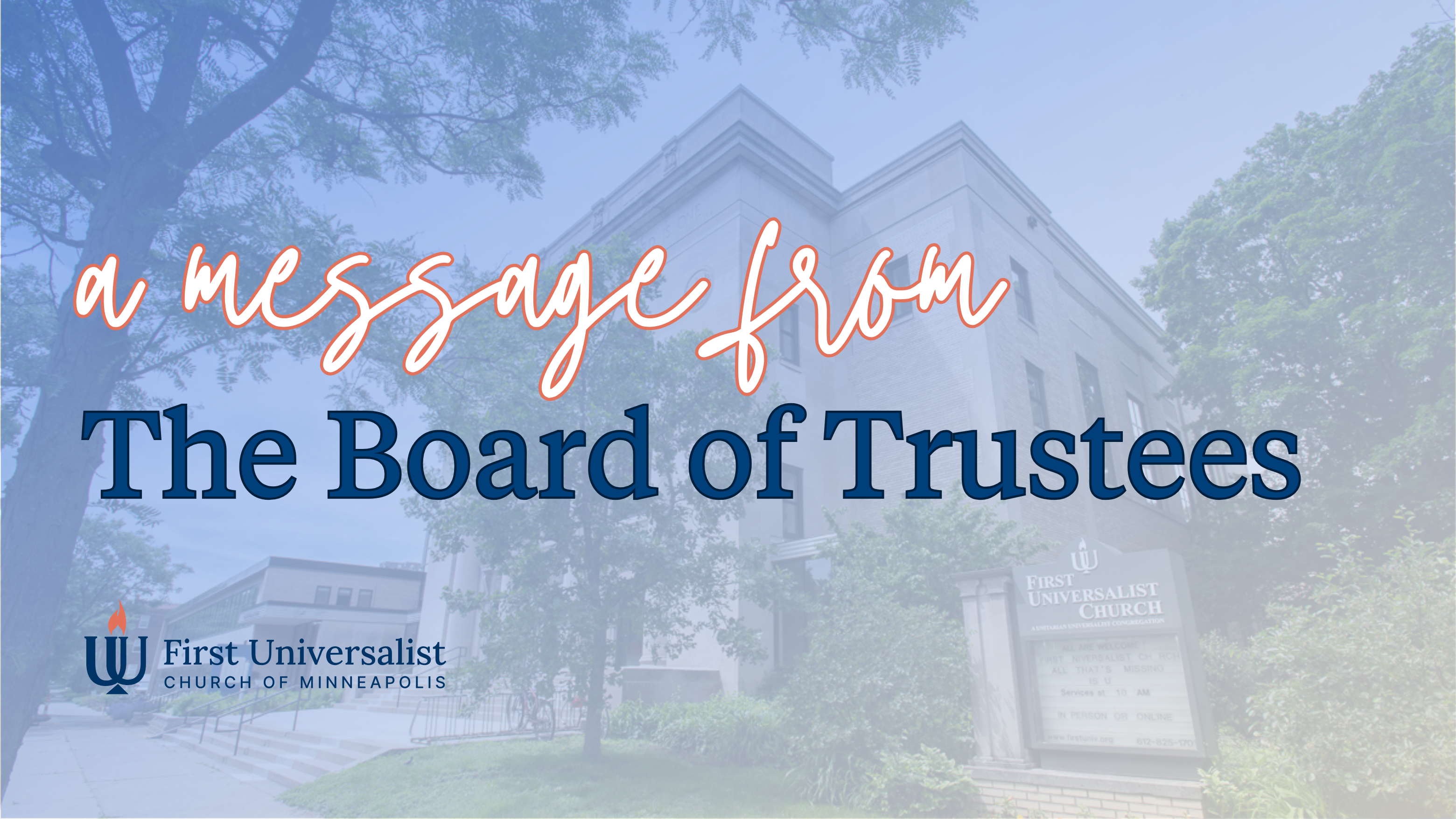Smorgasboard
News –

A message from Board President Marc Gorelick, on behalf of the Board of Trustees:
I am frequently asked about how decisions get made at First Universalist. In the previous column I talked about how authority is exercised here, whereby the Board retains authority for strategic decisions, and delegates authority and responsibility for the vast majority of operational and programmatic decisions to the senior minister, who is then accountable for the results of those decisions. One of our goals for the year is to create greater clarity about the decision-making process.
We have agreed to follow a model with the acronym DRIVE. For key decisions, we aim to be specific about the following elements:
D: Who will make the decision? If it is a group rather than an individual, how will they decide (e.g., consensus, majority vote, etc.)?
R: Will the decision maker seek a recommendation? If so, who will be asked for that recommendation? Will they be asked for a single recommendation, or several options from which the decision maker will choose?
I: Who will be asked for input? How will that input be solicited?
V: Are there any key stakeholders with whom the decision needs to be vetted before it is finalized? This might involve asking for additional input, providing clarification, or resolving differences of opinion prior to the decision maker taking final action.
E: Who will be responsible for executing the decision? How will the decision be communicated to them?
That probably sounds a little esoteric, so let me illustrate with an example. As mentioned previously, we are undertaking a review and updating of the Governing Policies Handbook (GPH). It is a feature of strategic or policy governance: the set of Board policies that defines the functions and responsibilities of the Board and Senior Minister, and how they will work together. So how will we do that?
Because this is a set of Board policies, the Board will be the Decision-maker, voting in our usual manner with a majority vote prevailing. We have tasked the Governance Committee, which includes two board members and three other members of the congregation, to come with a Recommendation. Basically, we are asking them to review the existing document and recommend any changes. If there are sections where they feel there may be more than one desirable option, they can offer them. They will also be asked to solicit Input from key stakeholders. This should include at a minimum: members of the Board, the Senior Minister and other key staff, and chairs of the committees to whom the policies apply. Since the GPH is critical in defining the relationship between the Board and the Senior Minister, the decision will be Vetted with the Senior Minister before it is finalized. Ideally this would mean we have a consensus on the content of the revisions, but provides an opportunity for honest sharing of perspectives where there may be disagreement. Those responsible for Executing the new GPH include the Board, the Senior Minister, and the chairs of committees.
Now, you might be thinking this seems kind of tedious and over-engineered. Especially for decisions that are less complex than an overhaul of our governing policies. That may be true. But we see some value in being explicit, certainly at first, and for larger or more complex decisions. First is transparency. Many decisions made by the Board or the Senior Minister have elements that cannot be openly talked about, such as personal or confidential information. But we can be transparent about the process that followed to reach that decision, including who was responsible and whose input was provided. This is particularly important because in a large, diverse group like our congregation there is unlikely to be unanimity of opinion. I have often heard people feel they had no say in a decision, when in fact their perspective was one of many considered, and a different decision than the one they hoped for was reached. Being explicit about what input was sought can help differentiate between being disappointed and being disregarded.
Another advantage of this explicit model of decision making is inclusiveness. While individuals are in different places along the continuum of intercultural development, as a congregation and as a Board we have an orientation of minimization. This means we tend to emphasize and focus on what we have in common, and divergent perspectives may be overlooked or, well, minimized. This intentional framework will help us acknowledge the important differences that exist in our community, incorporate them into our work, and allow us to make better informed and more inclusive decisions.